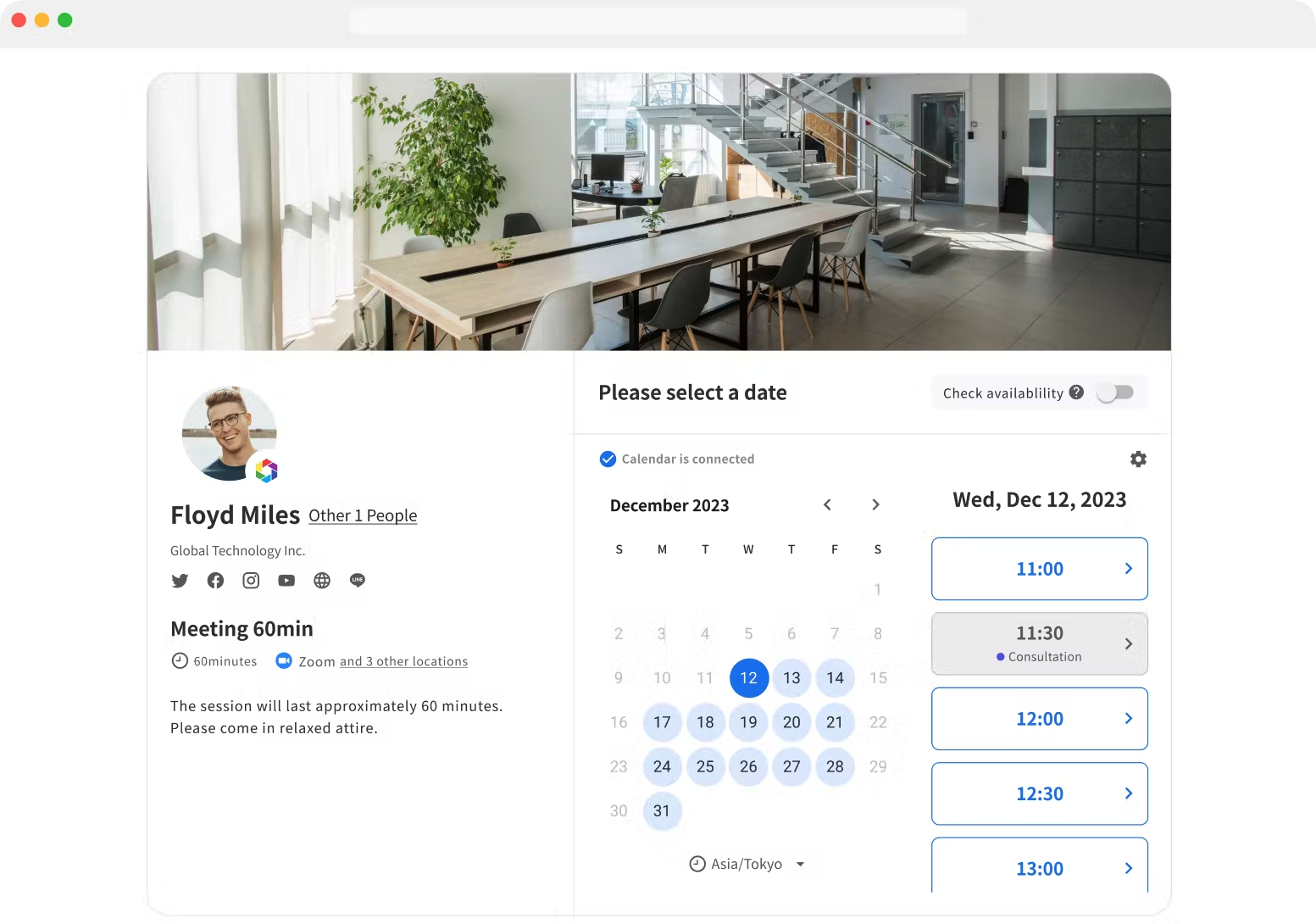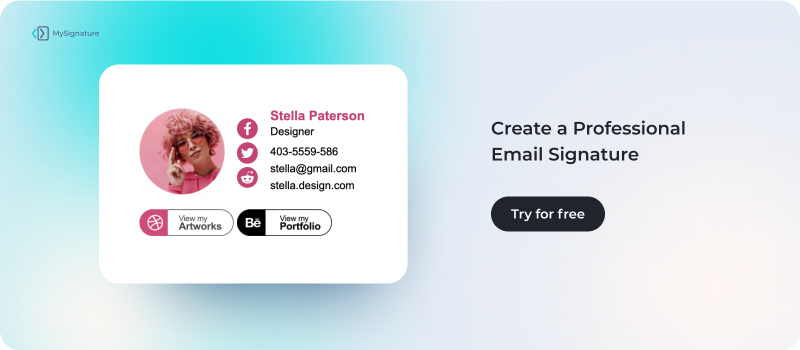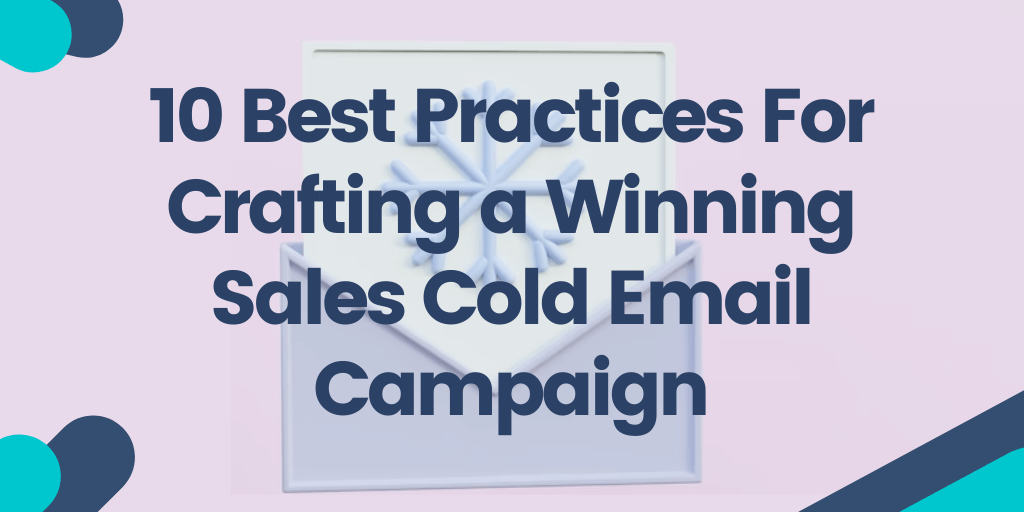Emails have been around since the ’70s and are unlikely to die anytime soon. They are still widely relied on as primary marketing and sales channels compared to other mediums.
Omnisend’s recent reports suggest an average ROI of $40 for just a dollar spent on email marketing.
Due to such a high ROI potential, emails have unfortunately transitioned into an overly cluttered channel with ever-increasing competition. Creating an email in this saturated environment can be challenging, especially considering the massive drop in open and click-through rates. And this fight for the inbox has led to a massive drop in open and click-through rates.
While most email marketing campaigns have faced this crunch, cold emails are the most affected.
And since cold email campaigns are undoubtedly the best at generating sales, companies must innovate strategies to beat the competition.
In this blog post, we will delve into the top ten best practices that can greatly contribute to the success of your cold email campaign.
10 Best Practices For Crafting a Winning Sales Cold Email Campaign
1. Create audience segments
2. Use a compelling and to-the-point subject line and preview text
3. Always add an email signature
4. Give them a direct line to speak to you
5. Add social proof
6. Send follow-ups
7. Include a clear call to action
8. Monitor and adapt timing to audience behavior
9. Tailor the value you offer
10. Keep it short
10 best practices to win more sales from cold emails
While there is no one said way to run cold email campaigns, here are a few tips and best practices we do recommend to make the most of the few seconds of attention you have in crowded inboxes:
1. Create audience segments
Even if you’ve figured out your target audience, you must further break them down into similar groups for more precise targeting, especially for cold emails.
A lack of audience segmentation makes your cold emails sound spammy and non-relevant. You could also risk being blocked or marked as spam. So apart from the regular segmentation, like age, gender, and locality, start segmenting your audience by identifying their common interests and engagement patterns.
In addition to understanding your target audience, it is crucial to ensure that your cold emails are reaching the right decision makers within that audience. Identifying and reaching out to the appropriate individuals greatly influences your chances of winning more leads and running a successful campaign.
Why is this important?
The right segmentation can boost email personalization, a necessary strategy to garner more open and click-through rates. For instance, as soon as the prospect notices that your cold email resonates with their ongoing pain point, there’s a high chance you will receive a response.
2. Use a compelling and to-the-point subject line and preview text
A catchy subject line and a precise preview text are essential to receive more responses. That’s because they are the first things that pop up on your prospect’s mobile or desktop.
A curiosity-initiating and short subject line persuades the prospect to open and read through the email. Also, remember to stick to the optimum length of 40 to 90 characters while writing preview texts, as lengthier texts get cut off and hamper engagement.
A common mistake most businesses make is targeting email open rates alone by writing clickbait subject lines unrelated to the email body. This is a major risk as you could frustrate the prospect and cause a wrong first impression, take help of an AI email writer for guidance.
For example, any false alarm-inducing subject lines with words like ‘Urgent,’ ‘You’re running out,’ and ‘Exclusive’ can impact your reputation.
So no matter how well-curated your cold email body is, you must respect your prospect’s time by writing to-the-point subject lines and preview texts.
3. Always add an email signature
An email signature adds a professional touch to your cold emails and lets you stand out by highlighting credentials.
But this doesn’t count traditional text email signatures that resemble formatted texts copied from a Google document that most businesses still use.
So what does a unique and impressive email signature look like? Here’s an example:

Here are some quick extra tips to make your signature stand out:
- Add your company’s logo to build more trust.
- Add your current position at the company.
- Add a high-quality picture with a neutral background (as per company branding) and include contact info for various touchpoints.
- Add icons to your social media platforms to increase traffic to your pages.
- Optimize your signature for all devices.
Finally, make the signature links trackable so you can analyze each signature’s effectiveness by monitoring clicks.
4. Give them a direct line to speak to you
Most businesses miss adding phone numbers and only add email addresses or website URLs for recipients to reach out. In reality, however, some potential customers may prefer to call you rather than wait for an email response. Or they may be deeply interested and want to set up a web conference. While the lead's interest is high, Jicco can help you schedule it instantly; Jicoo uses easy setup and AI to get appointments with leads based on your schedule.

So if your cold email was persuasive enough for a prospect, ensure you shorten the conversion cycle by adding your business phone number.
Since cold emails are the first point of communication between you and your prospects, make it easy for them to reach you through their preferred medium. You can add your official phone number to your email signatures for easier spotting.
5. Add social proof
Suppose you’ve successfully persuaded the prospect to open your email but failed to capture their interest — your cold email is still a lost cause.
So what can grab your reader’s mere seconds of attention and also add credibility to your claims? It’s social proof.
Instead of focusing solely on the sales pitch, try leading with a case study. Let it talk about the results your company helped bring to fruition and ensure it belongs to the prospect’s industry/domain.
You could also add a customer testimonial highlighting your company’s capability and the benefits of working with you.
6. Send follow-ups
Your prospects’ inboxes could be bombarded by multiple emails due to the high competition among businesses. So there’s a big chance your first cold email to them was buried away or forgotten.
Email experts suggest follow-up emails have higher open rates than initial cold emails. Ideally, you must send at least two follow-up emails for your prospects to notice and boost your cold email success rate.

source: Klenty
As you can see, the second follow-up email has a higher chance of fetching a response than the first follow-up.
Additionally, ensure your follow-up emails are sent strategically. Suppose a prospect has clicked a link in your email signature or body, say on the company URL. This gesture indicates they were interested in your offering but could not complete the action. So send them a separate personalized follow-up sequence rather than a generic one. Similarly, send a separate follow-up email to prospects who did not open your emails.
Don’t forget to add trackable links within your email body or signature to analyze engagement and send customized follow-up emails without guesswork.
7. Include a clear call to action
A cold email without an actionable call to action (CTA) leaves your prospects hanging. Always state the intention behind sending the cold email. Is it to book a meeting, sign up for a product demo, or respond to the email? Be crystal clear with your ask.
So what’s the best CTA for cold emails? CTAs are broadly classified into three categories:
- Specific time-based CTA: You add a specific time for the recipient to book a call. Like, ‘Are you free to meet at 6 PM CT?’
- Open-ended CTA: You ask them for a meeting. Like, ‘Can I send a few times to chat?’
- Interest CTA: You ask them if they’re interested. Like, ‘Let me know if you’re interested to learn more about X.’
These three CTAs can be used for various situations. However, interest-led CTA takes the lead for cold emails:

source: Gong
Since a cold email is used to contact a prospect for the first time, it’s best practice to sell a conversion using an interest-based CTA rather than being upfront and asking for a meeting like the rest of the CTAs.
8. Monitor and adapt timing to audience behavior
There is no hard and fast rule to timing cold emails. It can entirely depend on your audience segments and how they open and interact with your emails.
Say your prospect is in a 9-5 job. The ideal time to send a cold email would be in the early hours of the day before lunch to ensure the email stays on top of their inbox. Avoid sending a cold email on a Monday (and, of course, the weekends), as your prospects could be occupied with internal updates.
Studies suggest Wednesday, i.e., the midweek, to send cold emails and receive the most responses.

You can combine the best days and timings to see what works best for your use case. So based on your audience segments, A/B test cold email campaigns to monitor and adapt to their timings.
9. Tailor the value you offer
Every prospect looks for value before trusting your claims. So to increase the possibility of a response, go a step beyond personalization and aim to deliver value first.
How can you add and tailor value?
You can highlight a pain point they seem to face and let them know your expertise in that field or offer a few tips to let them know how you’ve helped a competitor overcome similar issues.
Or, suppose your company specializes in content marketing. You can explore a prospect’s existing website content, highlight weak points, and give valuable advice on how they can boost their website conversions.
You could also add a quick preview of your process and let your prospects know what’s in store for them.
10. Keep it short
People have short attention spans. It’s termed the 12-second rule of emails, where you only have this short window to convey your message before the prospect navigates away.
Even as you incorporate all of the above best practices, remember that people are busy and have less time. So keep your emails skimmable and precise, and be respectful of their time.
Multiple reports suggest the ideal length of a cold email ranges between 50 to 125 words with 5 to 10 lines of text. So, as a rule of thumb, ensure you focus on a single ask for a cold email. And don’t overwhelm a prospect by asking or conveying multiple things in one go.
Summing up, make their responses as low effort as possible by being accurate with your message and CTA.
Conclusion
There’s no definite approach to cold emailing that guarantees a response. But following the discussed tips lets you craft personalized cold emails that ace your efforts and bring you closer to conversions.
And do not be underwhelmed if you fail to receive a response in one shot. As we discussed, send at least two follow-ups, add value, personalize, and keep things precise.
Most importantly, research your audience non-stop and experiment with different cold emailing approaches for the best ROI.

Lastly, don't overlook the impact of a well-crafted email signature. Utilizing a professional and informative email signature can enhance your credibility, provide essential contact information, and further establish a positive impression on your recipients. So, remember to optimize your email signature as an additional element for email success.


